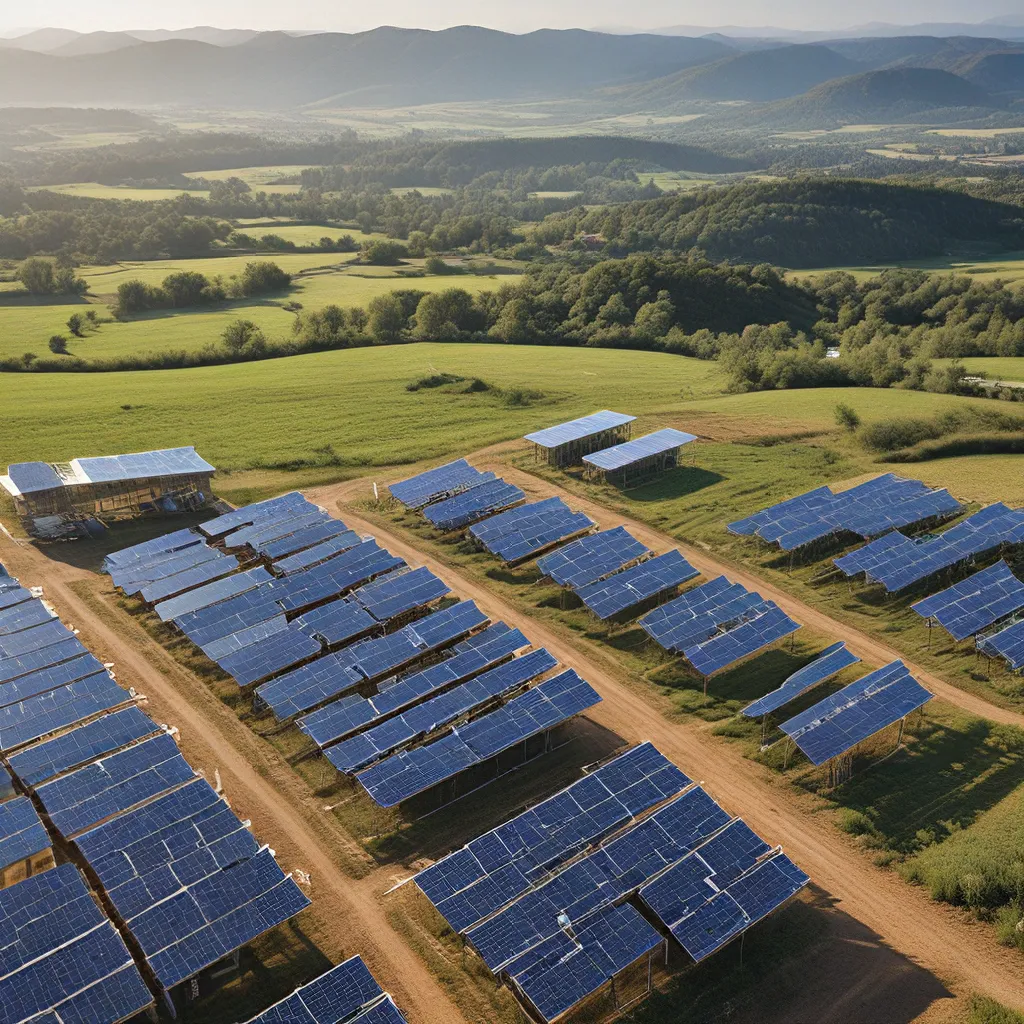
The Renewable Energy Conundrum
Ah, the allure of renewable energy! Who doesn’t love the idea of harnessing the boundless power of the sun, wind, and water to power our lives? It’s a sustainable, eco-friendly solution that seems too good to be true. But as with most things in life, there’s a catch – the pesky problem of intermittency.
You see, the very nature of renewable energy sources is their Achilles’ heel. Solar panels only work when the sun is shining, wind turbines only spin when the wind is blowing, and hydroelectric dams can only generate power when there’s enough water flowing. This variability in energy production can wreak havoc on our power grids, leading to imbalances, energy waste, and an over-reliance on traditional backup power sources.
But fear not, my friends! The brilliant minds in the energy storage world have been hard at work, concocting innovative solutions to overcome this challenge. Let’s dive in and explore the game-changing technologies that are poised to revolutionize the way we harness and store renewable energy.
Taming the Intermittency Beast
Renewable energy storage is the key to unlocking the full potential of clean, sustainable power. By capturing and storing excess energy during periods of high production, these systems can release it when demand is high, ensuring a consistent and reliable supply of electricity. It’s like having a personal energy butler, always at the ready to cater to your power needs.
One of the primary benefits of renewable energy storage is its ability to stabilize the grid. Imagine a power grid as a delicate balancing act, with energy producers and consumers constantly trying to keep the scales perfectly level. When renewable energy sources fluctuate, it can tip the scales, leading to grid instability and potential blackouts. But with energy storage in the mix, the grid can maintain its equilibrium, smoothing out the peaks and valleys of renewable energy production.
Moreover, energy storage solutions enable the seamless integration of variable renewable sources, like solar and wind, into the grid. Instead of relying solely on traditional fossil fuel-based power plants, energy storage systems can store the excess energy produced during peak renewable generation and release it when the sun isn’t shining or the wind isn’t blowing. This ensures a steady and reliable supply of electricity, reducing our dependence on polluting backup sources.
A Renewable Energy Toolbox
Now, let’s take a closer look at the innovative technologies that are transforming the way we store renewable energy.
Battery Energy Storage Systems (BESS)
Lithium-ion batteries, the same power-packed wonders that fuel our electric vehicles, have become a go-to solution for energy storage. These scalable and modular systems can be deployed at both the residential and grid-scale level, offering quick response times and the ability to store large amounts of energy. As battery technology continues to improve, we’re seeing significant advancements in performance and a steady decline in costs, making BESS an increasingly attractive option for renewable energy storage.
Pumped Hydro Storage
Pumped hydro storage is one of the oldest and most well-established energy storage technologies. It works by pumping water to an elevated reservoir during periods of excess electricity, and then releasing it through turbines to generate power when demand is high. While it requires specific geographical conditions, pumped hydro storage offers massive storage capacity and the ability to provide long-duration energy backup.
Thermal Energy Storage
Thermal energy storage systems take a different approach, storing heat or cold generated from renewable sources for later use. This technology is particularly useful for applications like district heating, industrial processes, and HVAC systems. By decoupling energy generation from immediate consumption, thermal energy storage improves efficiency and reduces energy waste, making it a valuable asset in the renewable energy storage toolbox.
Power-to-X
Power-to-X technologies take the concept of energy storage one step further by converting surplus renewable electricity into other forms of energy or products. For example, Power-to-Hydrogen uses electrolysis to produce hydrogen, which can then be used for transportation or industrial purposes. These versatile solutions enable the transformation of excess renewable energy into storable fuels or feedstocks, offering additional flexibility and value.
Advanced Grid Management Systems
Tying all these innovative technologies together are the brilliant minds behind advanced grid management systems. These cutting-edge platforms leverage digital technologies, artificial intelligence, and machine learning algorithms to optimize the integration of renewable energy and storage. By forecasting renewable energy generation, managing grid imbalances, and dynamically adjusting energy flows, these systems maximize the utilization of renewable resources and storage capacity, ensuring a seamless and efficient energy ecosystem.
Powering the Clean Energy Future
The future of renewable energy is bright, my friends, and it’s all thanks to the remarkable advancements in energy storage. By tackling the challenge of intermittency head-on, these innovative solutions are paving the way for a more sustainable, reliable, and resilient energy future.
As we continue to push the boundaries of what’s possible, I can’t help but feel a sense of excitement for the days ahead. Imagine a world where the sun’s rays and the wind’s gusts are harnessed to their full potential, and the energy they generate is stored and distributed with precision and efficiency. It’s a future that’s not only cleaner and greener, but also more secure and empowering for all.
So, let’s raise a virtual glass to the brilliant minds in the energy storage realm, the unsung heroes who are making the dream of a renewable-powered world a reality. With their ingenuity and our collective commitment to sustainability, I have no doubt that we’ll overcome the challenges of intermittency and usher in a new era of clean, reliable, and accessible energy for all.